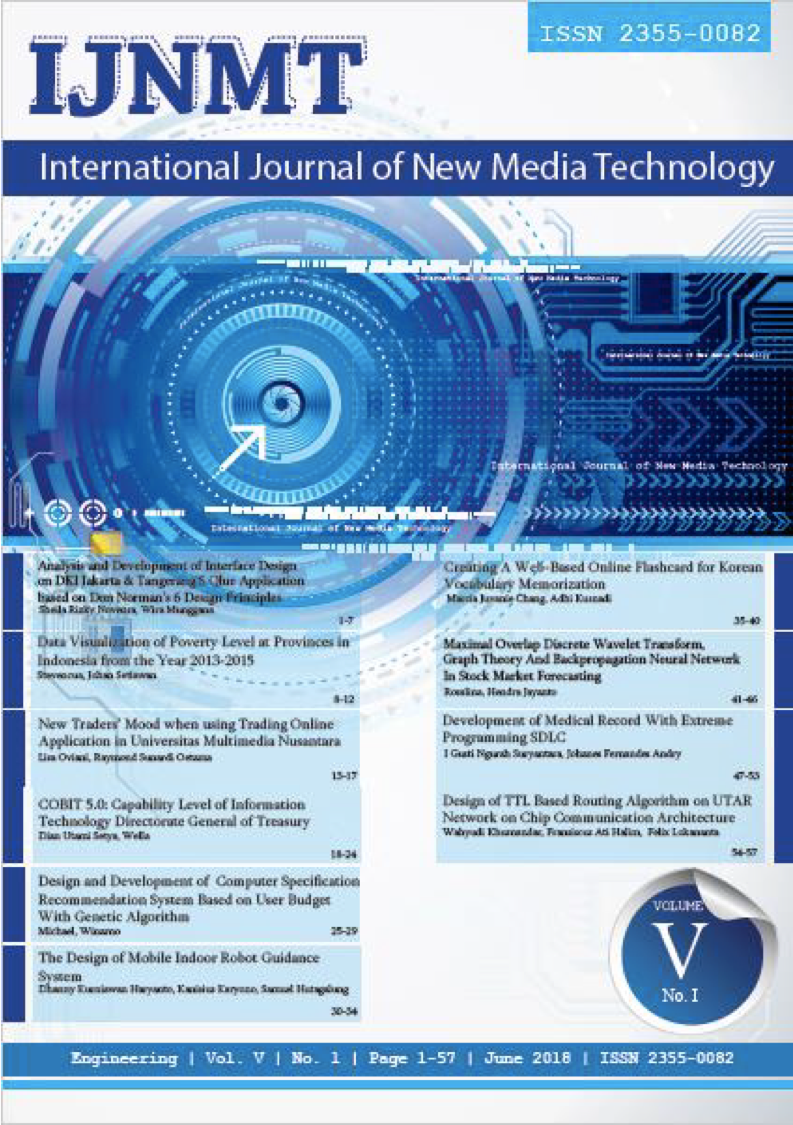Data Visualization of Poverty Level at Provinces in Indonesia from The year 2013-2015
DOI:
https://doi.org/10.31937/ijnmt.v5i1.813Abstract
The aim of this paper is to create a data visualization that can convey information on poverty distribution of every province in Indonesia and to find a connection with education level. The method used is Eight-step data visualization and data mining methodology. Data for this research are taken from BPS from the year 2013 to 2015. Data collected after the data extracted and cleansing is 6000 records. Time needed to convert data from several publications and put it into one Excel file is 2 weeks. Tableau is chosen as tools for creating the Data Visualization. With this tools, data showed in a story dashboard which consists of 3 dashboards. The first dashboard is a mapping of poverty data onto provinces of Indonesia. The second dashboard is a mapping and distribution of education levels on cities and counties in Indonesia. The third dashboard is showing a ranking of areas with the highest percentage level of a citizen of education lower than elementary school in Indonesia. Based on the User Acceptance Test to BPS staff, authors have been able to produce the Story required, and interactive. As a conclusion from Data Visualization has been made, high poverty in certain areas not immediately is directly proportional to the level of education.
Index Terms ” Dashboard; data visualization, poverty, Tableau
Downloads
Downloads
Published
How to Cite
Issue
Section
License
Authors retain copyright and grant the journal right of first publication with the work simultaneously licensed under a Creative Commons Attribution-ShareAlike International License (CC-BY-SA 4.0) that allows others to share the work with an acknowledgement of the work's authorship and initial publication in this journal.
Authors are able to enter into separate, additional contractual arrangements for the non-exclusive distribution of the journal's published version of the work (e.g., post it to an institutional repository or publish it in a book), with an acknowledgement of its initial publication in this journal.
Copyright without Restrictions
The journal allows the author(s) to hold the copyright without restrictions and will retain publishing rights without restrictions.
The submitted papers are assumed to contain no proprietary material unprotected by patent or patent application; responsibility for technical content and for protection of proprietary material rests solely with the author(s) and their organizations and is not the responsibility of the IJNMT or its Editorial Staff. The main (first/corresponding) author is responsible for ensuring that the article has been seen and approved by all the other authors. It is the responsibility of the author to obtain all necessary copyright release permissions for the use of any copyrighted materials in the manuscript prior to the submission.















